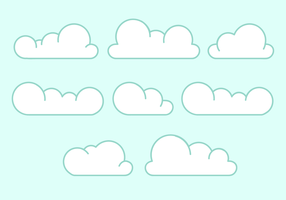Started off with making our own “directory” of prints to test out the different lino cutters. 

Then, we went right into brainstorming for our final piece… With two frames to cut and a story to tell, I thought that an interesting way would be to have a close up in the first and a wide shot in the other to create contrast and hopefully even a revelation due to the change in perspectives.
To read more about the story, click here to see the final piece.
In general, the story is about a pig who was thinking that he can fly amongst the clouds in the first frame, but we realised that he was actually carried by a stork in the second frame.
Hence, we will begin by breaking the frames down. Each breakdown will consist of two parts, first the elements and then the composition.
Starting with Frame 1 – Close Up, the required elements are the pig face, clouds and sky. With the elements identified (and after a consultation), I was able to look up vector images of the elements to break them down into more basic shapes to carve on the lino pads.
Element: Pig Face
Referenced Pig Face Vectors

![]()
![]()
![]()
Thus, the pig face is generally broken down into a circle for the face and then oval and circles for the snort.
Element: Clouds
Referenced Clouds Vector


Thus, the clouds that I close had a straighter base, and curvy tops. Some lines in the clouds also made them look fluffier.
Element: Sky
Referenced Sky Examples



With the sky left with no texture, I looked up examples of how the cut can be made more engaging. I decided with just slightly wavy lines.
Composition
With a close-up, the pig face was the main subject and had to occupy much of the frame. Hence, the Gestalt Law of Closure was applied, with the circle being drawn partially out of frame. Even though the full circle/pig face is not seen, the audience can connect the lines outside the frame to form the full circle in their minds, allowing for the pig face to appear larger than the frame. The pig face will also occupy just about two-thirds of the frame using the rule of thirds. The other third of the frame will be filled with clouds and sky texture. The following is a sketch of the composition before carving.


Next, Frame 2 – Wide Shot. This frame consists of a pig silhouette/body, stork, landscape, clouds and sky elements.
Element: Pig Body
Referenced Pig Vector
![]()

The pig body I decided with was similar to the one on the far right as it had simple elegant curved lines and I further reduced the shape to just having two legs seen.
Element: Stork
Referenced Stork Vector




The stork was decomposed to a semi-circle for the body and I decided with wings up. I also referenced real-life stork images to separate the bird’s white body and black wings.
Element: Landscape
Referenced Landscape Examples



For the landscape, I referenced linocut examples as well on how the hills can be separated out into interesting basic shapes and lines.
Element: Sky
The sky texture will be similar to the one in the first frame.
Composition
As a wide shot, the stork will be carrying the pig and both are placed near an intersection of the rule of thirds grid. The landscape will be taking up around 1/4 of the frame from the bottom to create a more dynamic composition, using the dynamic rule of thirds.


Process
After, I started by carving the frames on the lino pads.
To orientate the carving – printing, I kept recalling that what is carved will become white (opposite). For more difficult parts, I also drew out what I wanted to achieve and then reversed it.


The first frame was simpler and it could be carved in a more straightforward manner. However, with the second frame, the sky and objects were more complicated. I had some difficulties like figuring out where there should be patterned lines vs just a full basic black/white space. I thought that just black and white parts were too simple at first and then started carving more lines but then the shapes became too messy and hard to distinguish…
Hence, I had to compromise and carve some of them out, printing white spaces around the key shapes like the pig. Also, my composition changed again and the hills seem to take up about 1/3 of the landscape.

To read more about the final frames, click here.

